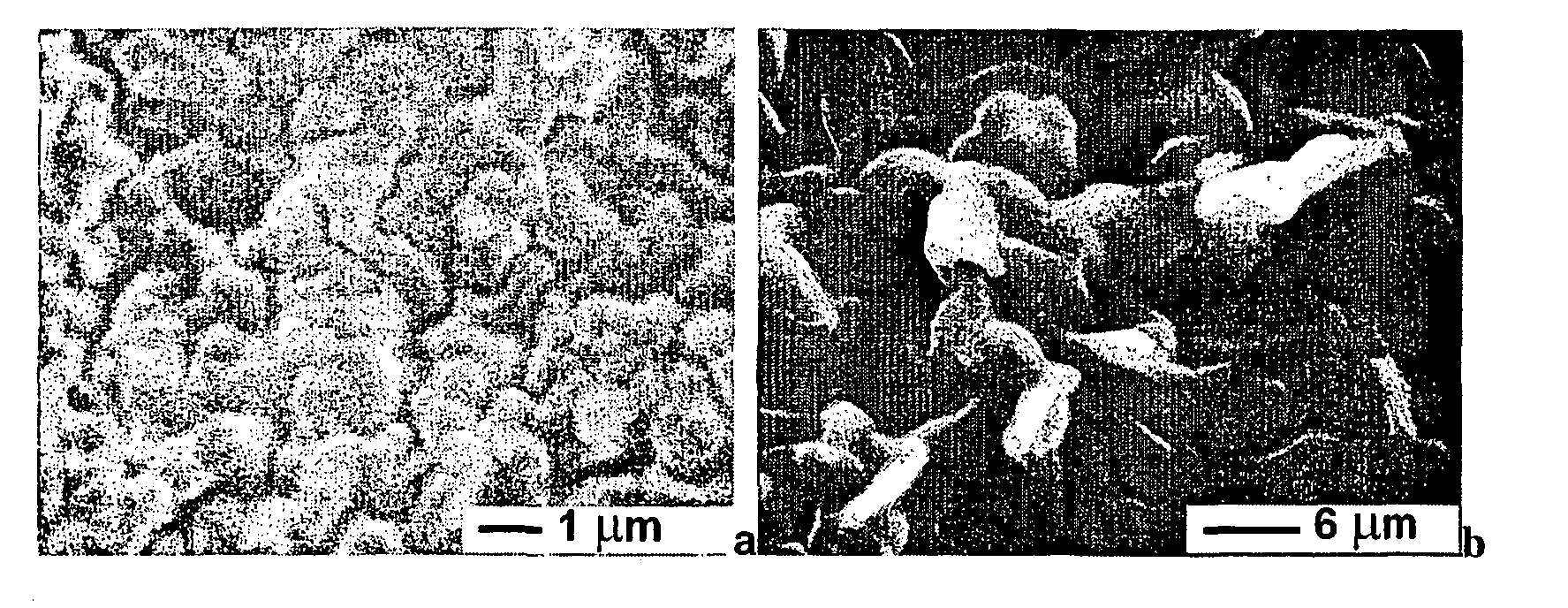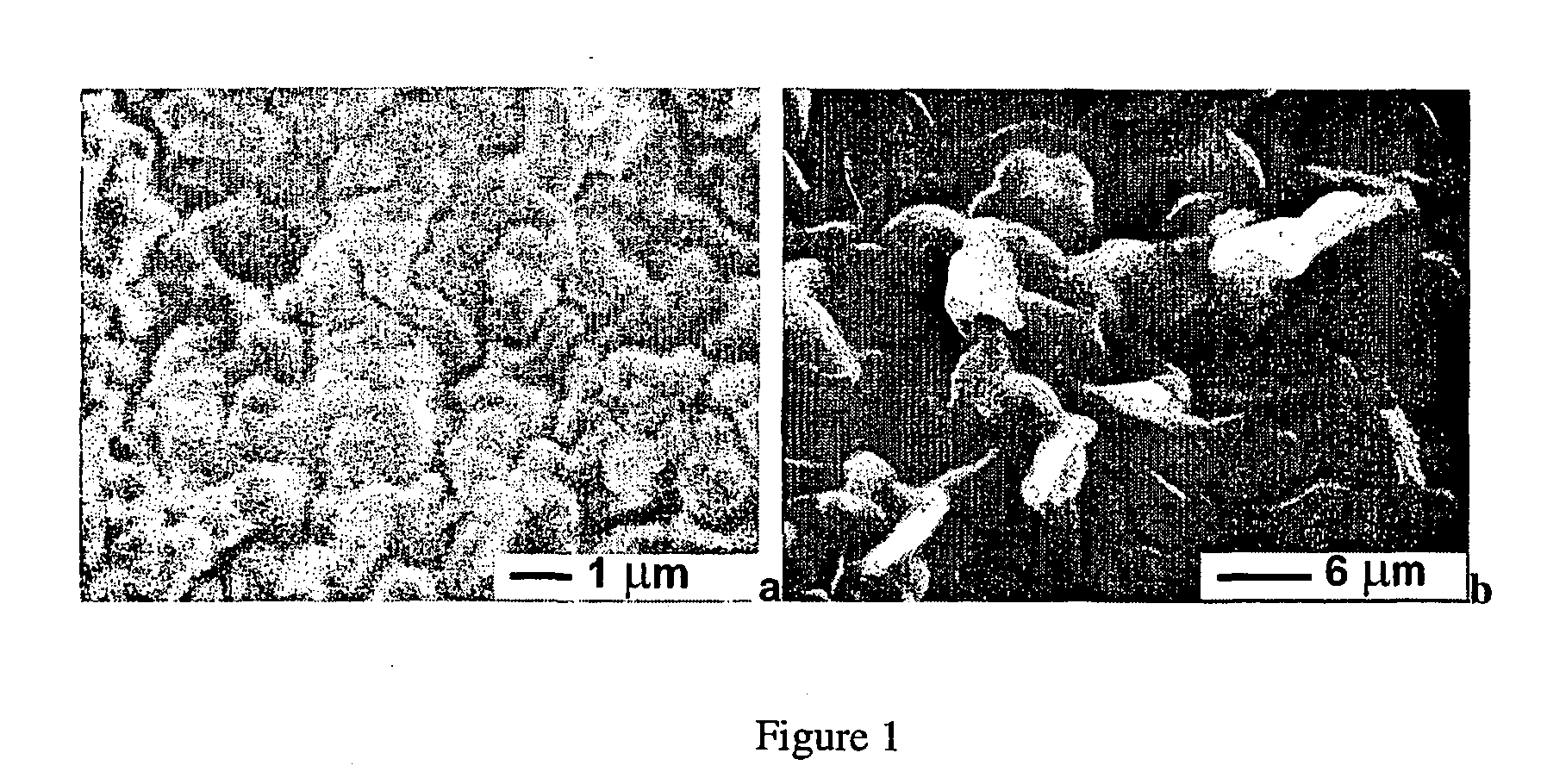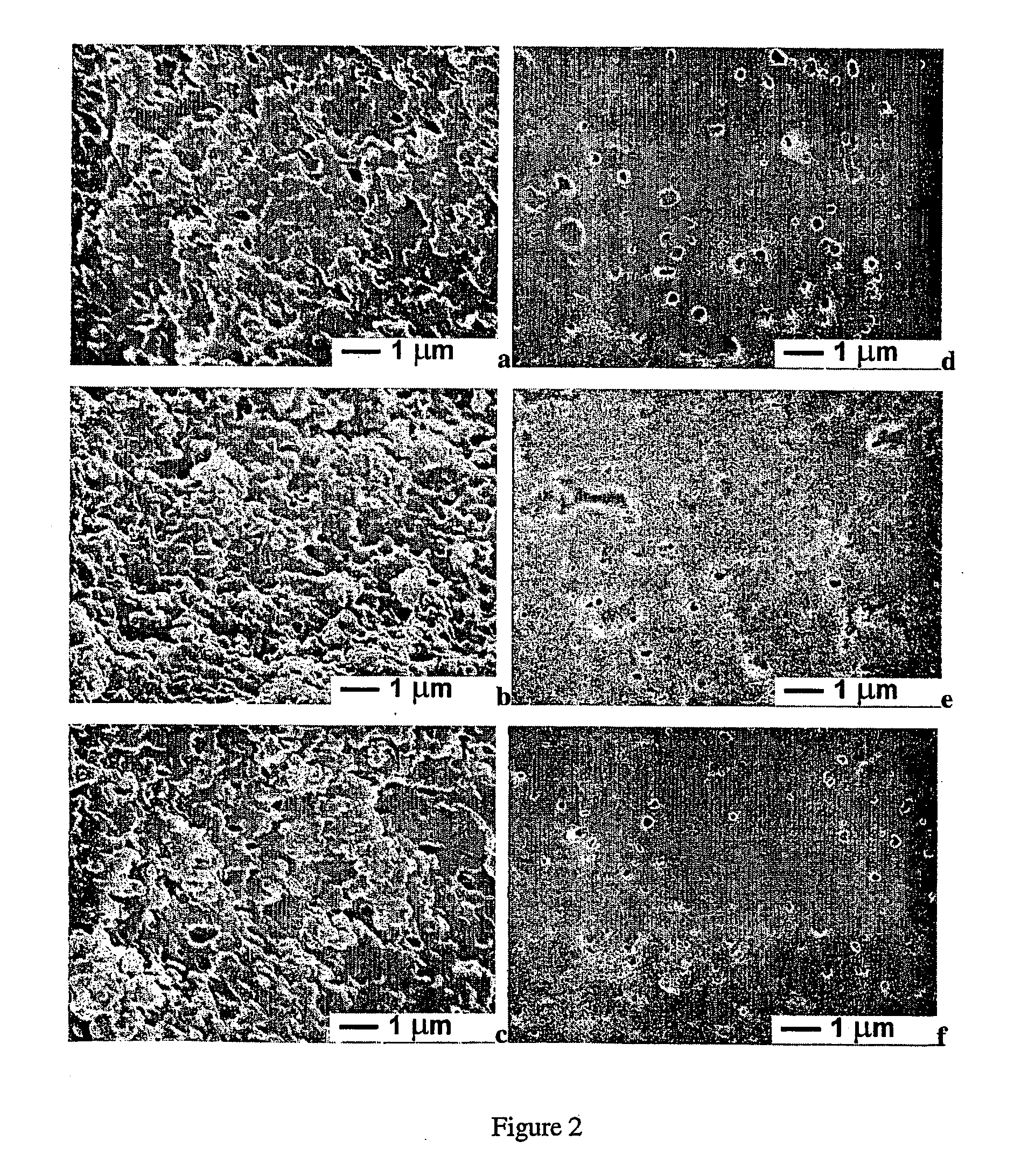Soybean-based thermoplastic as biomaterials
a thermoplastic and soybean technology, applied in the field of soybean-based thermoplastic as biomaterials, can solve the problems of toxic effects of degradation products, difficult modulation, and inability to achieve ideal biodegradable materials, and achieve the effects of improving biocompatibility and mechanical properties of materials, facilitating rapid formation, and modulating the degradation time of materials
- Summary
- Abstract
- Description
- Claims
- Application Information
AI Technical Summary
Benefits of technology
Problems solved by technology
Method used
Image
Examples
example 2
Preparation of Expanded Tofu Gels at Different Pressures
[0034] Method
[0035] Tofu slices were immersed in phosphate buffered saline pH 7.2 (PBS) for 24 h at room temperature and autoclaved at different temperatures (100, 115; 121.degree. C.). Each temperature value corresponded to a different pressure (100.degree. C.=1 Psi; 115.degree. C.=9 Psi; 121.degree. C.=14 Psi). The gel slices were kept for 5 min at the settling temperature and the pressure of the autoclave was then gradually decreased. The films were finally freeze-dried overnight.
[0036] The same procedure was applied to the fresh Tofu cheese specimens.sup.8.
[0037] In an alternative methods, the wet films were freeze-dried overnight.
[0038] All the specimens were sputter-coated with gold and analysed by Scanning Electron Microscopy at .times.12,000, 5 kV.
[0039] Results
[0040] By the adopted autoclaving procedures gels of different porosity were obtained. The pore density increased with the increase of the autoclaving temperatur...
example 3
Preparation of polypeptide-functionalised Tofu Thermoplastics
[0044] Method
[0045] Tofu-derived thermoplastics were functionalised by grafting specific bioactive peptides to the soybean polymers through the reaction of aldehydes with amino groups of the soybean proteins (Schiff's bases formation). The films were immersed in a 0.25% (w / v) glutaraldehyde solution in phosphate buffer containing different concentrations of the bioactive peptides for 1 h at room temperature. Alternatively, 0.38% (w / v) formaldehyde was used as coupling reagent. In both the protocols, a step of reduction of the double C.dbd.N bonds by 10 mM CNBr was performed.
[0046] Alternatively, grafting can be achieved via disulphide bridges or via alcohol esterification or through other classical biochemical methods
[0047] All the peptides with specific cell receptor functions, calcium-binding properties as well as growth factors are included in this invention as functionalisation molecules of the Tofu-derived thermoplast...
example 4
Tofu Thermoplastic Composite Materials
[0048] Method
[0049] The synthesis of composite biomaterials based on Tofu thermoplastics is based on techniques such as blending, interpenetrating polymer networks and grafting with biocompatible synthetic and natural polymers which can confer to the Tofu thermoplastics:
[0050] (i) Increased plasticity (low glass transition temperature) at dry state;
[0051] (ii) Increased hydrophobicity;
[0052] (iii) Increased hydrophilicity (increased swelling properties in aqueous environment);
[0053] (iv) Physical and chemical cross-linking;
[0054] (v) Physical and biological (osteointegration) properties
[0055] (i) and (ii) Tofu cheese extra-firm paste is blended at 90.degree. C. with 1% (w / v) melted polycaprolactone of different molecular weights.
[0056] (iii) Tofu-derived porous thermoplastics, prepared as reported in Example 2, are interpenetrated by hydrophilic materials such as polyethylene glycol, poly(vinyl alcohol), poly(2-hydroxyethyl methacrylate), algina...
PUM
| Property | Measurement | Unit |
|---|---|---|
| Dimensionless property | aaaaa | aaaaa |
| Dimensionless property | aaaaa | aaaaa |
| Concentration | aaaaa | aaaaa |
Abstract
Description
Claims
Application Information
 Login to View More
Login to View More - R&D
- Intellectual Property
- Life Sciences
- Materials
- Tech Scout
- Unparalleled Data Quality
- Higher Quality Content
- 60% Fewer Hallucinations
Browse by: Latest US Patents, China's latest patents, Technical Efficacy Thesaurus, Application Domain, Technology Topic, Popular Technical Reports.
© 2025 PatSnap. All rights reserved.Legal|Privacy policy|Modern Slavery Act Transparency Statement|Sitemap|About US| Contact US: help@patsnap.com



